Nikolaos Kyriazis
Multi-view Image-based Hand Geometry Refinement using Differentiable Monte Carlo Ray Tracing
Jul 12, 2021



Abstract:The amount and quality of datasets and tools available in the research field of hand pose and shape estimation act as evidence to the significant progress that has been made. We find that there is still room for improvement in both fronts, and even beyond. Even the datasets of the highest quality, reported to date, have shortcomings in annotation. There are tools in the literature that can assist in that direction and yet they have not been considered, so far. To demonstrate how these gaps can be bridged, we employ such a publicly available, multi-camera dataset of hands (InterHand2.6M), and perform effective image-based refinement to improve on the imperfect ground truth annotations, yielding a better dataset. The image-based refinement is achieved through raytracing, a method that has not been employed so far to relevant problems and is hereby shown to be superior to the approximative alternatives that have been employed in the past. To tackle the lack of reliable ground truth, we resort to realistic synthetic data, to show that the improvement we induce is indeed significant, qualitatively, and quantitatively, too.
H-GAN: the power of GANs in your Hands
Apr 21, 2021
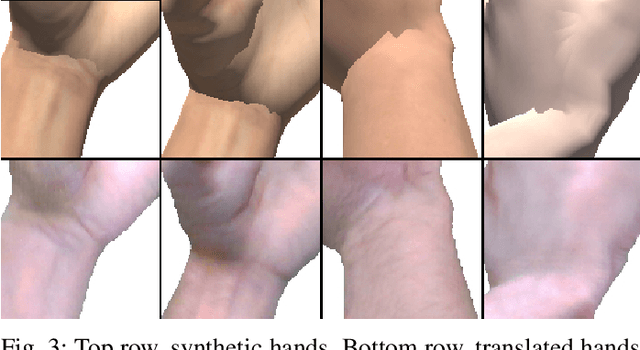
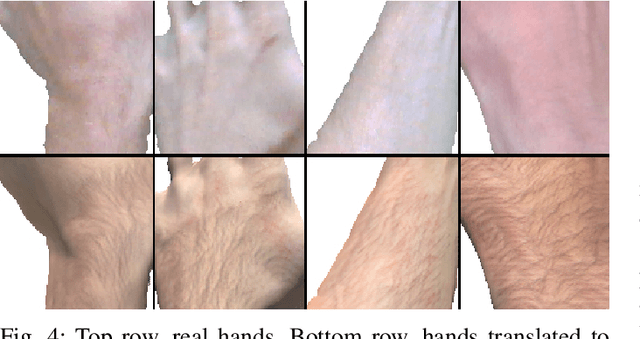
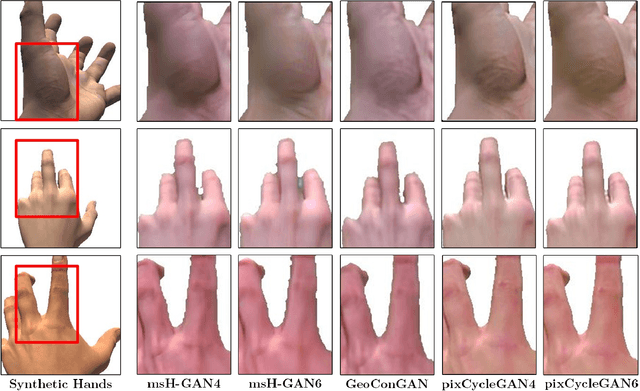
Abstract:We present HandGAN (H-GAN), a cycle-consistent adversarial learning approach implementing multi-scale perceptual discriminators. It is designed to translate synthetic images of hands to the real domain. Synthetic hands provide complete ground-truth annotations, yet they are not representative of the target distribution of real-world data. We strive to provide the perfect blend of a realistic hand appearance with synthetic annotations. Relying on image-to-image translation, we improve the appearance of synthetic hands to approximate the statistical distribution underlying a collection of real images of hands. H-GAN tackles not only the cross-domain tone mapping but also structural differences in localized areas such as shading discontinuities. Results are evaluated on a qualitative and quantitative basis improving previous works. Furthermore, we relied on the hand classification task to claim our generated hands are statistically similar to the real domain of hands.
Faster and Simpler SNN Simulation with Work Queues
Dec 17, 2019
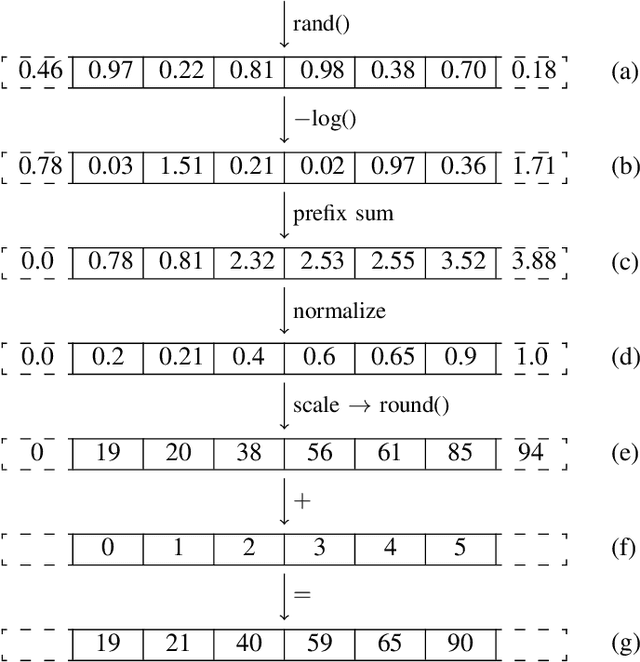
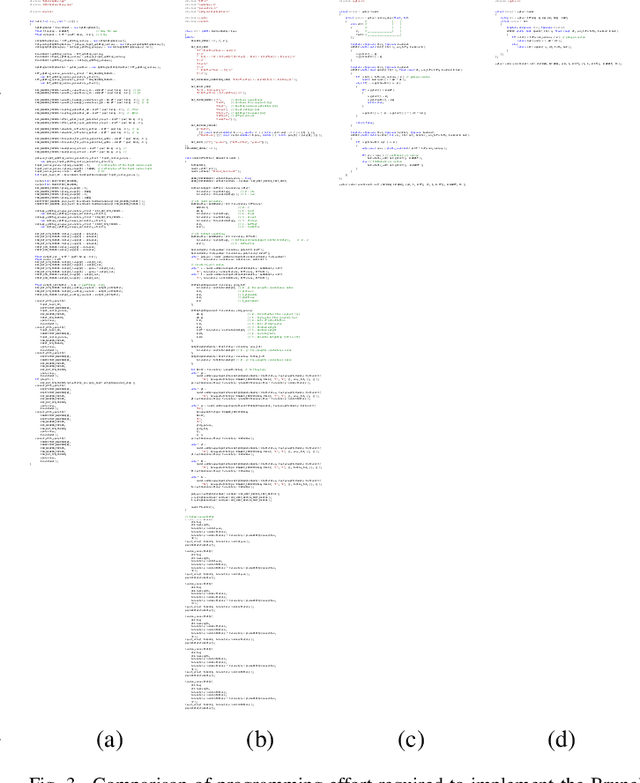
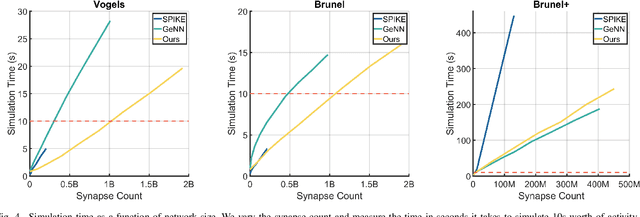
Abstract:We present a clock-driven Spiking Neural Network simulator which is up to 3x faster than the state of the art while, at the same time, being more general and requiring less programming effort on both the user's and maintainer's side. This is made possible by designing our pipeline around "work queues" which act as interfaces between stages and greatly reduce implementation complexity. We evaluate our work using three well-established SNN models on a series of benchmarks.
On the Feasibility of Real-Time 3D Hand Tracking using Edge GPGPU Acceleration
Apr 30, 2018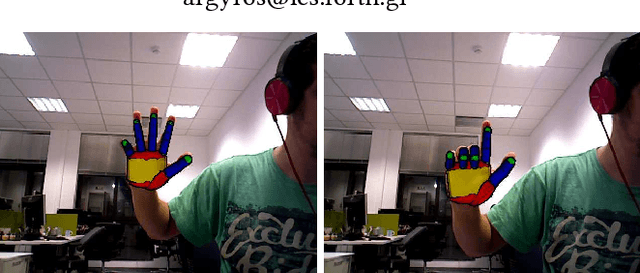
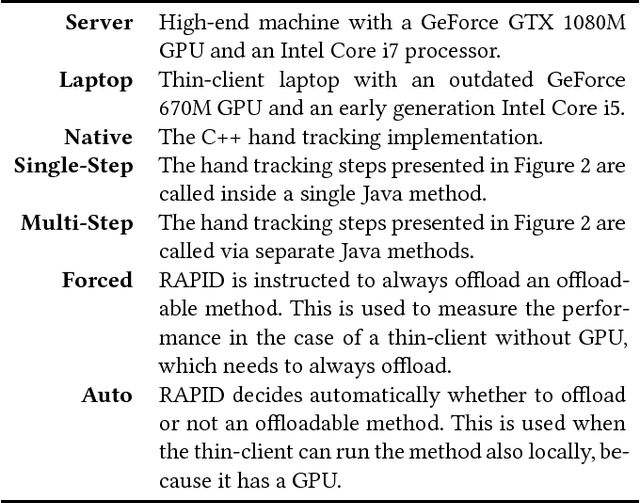

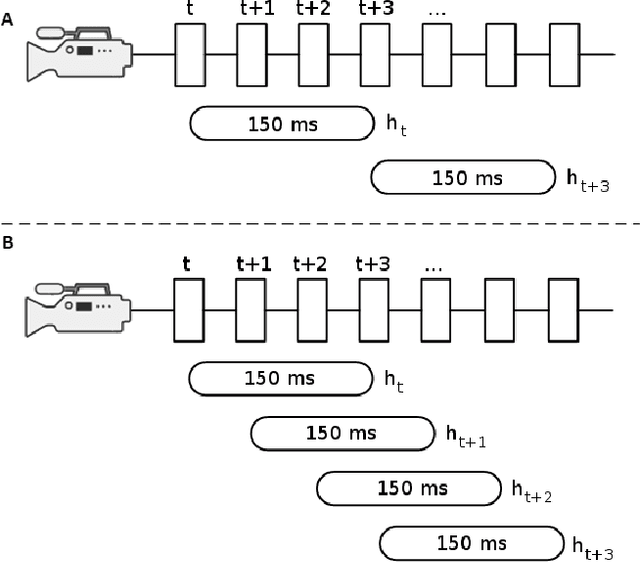
Abstract:This paper presents the case study of a non-intrusive porting of a monolithic C++ library for real-time 3D hand tracking, to the domain of edge-based computation. Towards a proof of concept, the case study considers a pair of workstations, a computationally powerful and a computationally weak one. By wrapping the C++ library in Java container and by capitalizing on a Java-based offloading infrastructure that supports both CPU and GPGPU computations, we are able to establish automatically the required server-client workflow that best addresses the resource allocation problem in the effort to execute from the weak workstation. As a result, the weak workstation can perform well at the task, despite lacking the sufficient hardware to do the required computations locally. This is achieved by offloading computations which rely on GPGPU, to the powerful workstation, across the network that connects them. We show the edge-based computation challenges associated with the information flow of the ported algorithm, demonstrate how we cope with them, and identify what needs to be improved for achieving even better performance.
 Add to Chrome
Add to Chrome Add to Firefox
Add to Firefox Add to Edge
Add to Edge